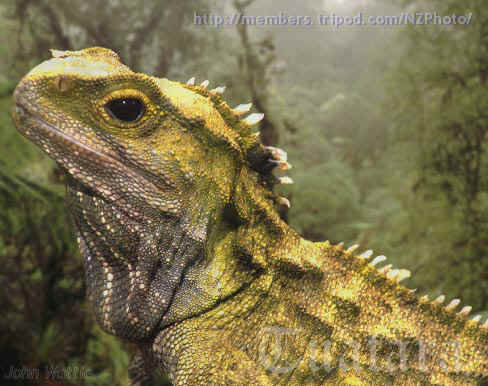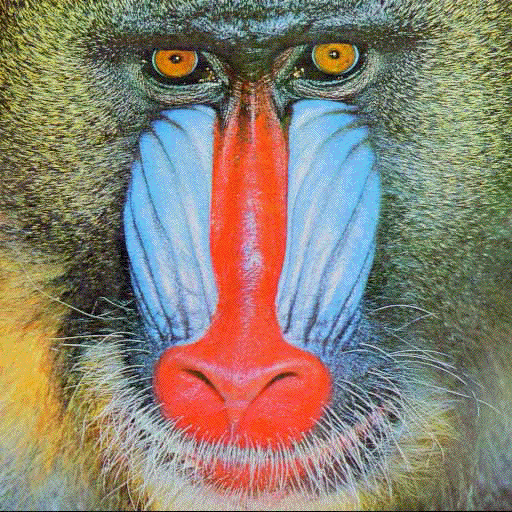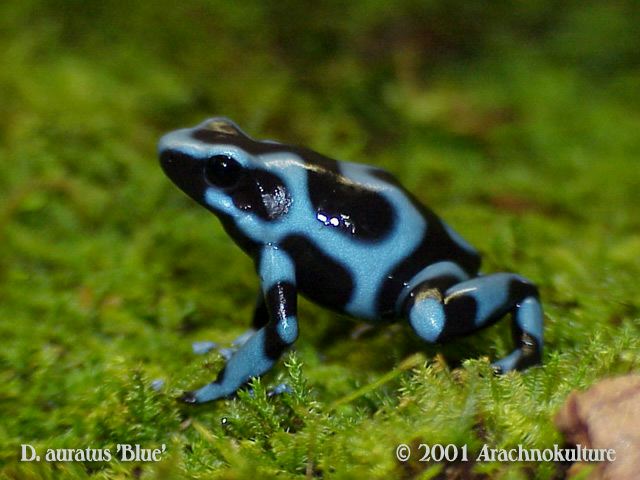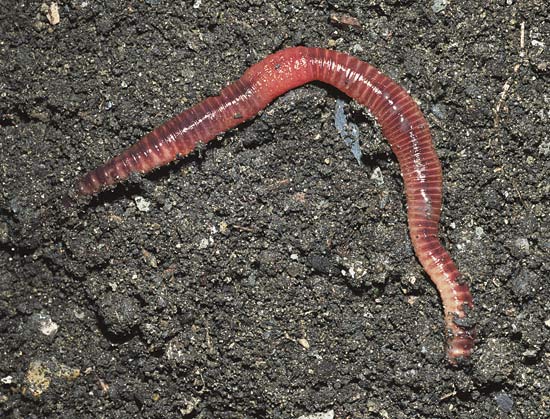Zoology - The Travel To The World Of Animals
(66).jpg)
This is a quiz by which you can learn your knowledge on Zoology. . . Good luck
- 1.
How many subkingdoms does Animal Kingdom contain?
- A.
2
- B.
3
- C.
5
- D.
8
- E.
10
Correct Answer
A. 2Explanation
The Animal Kingdom contains two subkingdoms. This classification system is based on the hierarchy of organisms, with the kingdom being the highest level. The two subkingdoms within the Animal Kingdom are the Parazoa, which includes the simplest multicellular animals like sponges, and the Eumetazoa, which includes all other animals. This division is based on the presence or absence of true tissues in the organisms.Rate this question:
-
- 2.
In which subkingdom are Sponges located?
- A.
Subkingdom Parazoa
- B.
Subkingdom Eumetazoa
Correct Answer
A. Subkingdom ParazoaExplanation
Sponges are located in the subkingdom Parazoa. Parazoa is a subkingdom within the animal kingdom that includes the simplest multicellular organisms. Sponges are considered to be the most primitive animals and they lack true tissues and organs. They are characterized by their porous bodies and ability to filter feed. Subkingdom Eumetazoa, on the other hand, includes all other animals that have true tissues and organs. Therefore, the correct answer is Subkingdom Parazoa.Rate this question:
-
- 3.
How many Sponge species are alive today?
- A.
1 000
- B.
2 000
- C.
12 000
- D.
10 000
- E.
20 000
Correct Answer
D. 10 000Explanation
There are approximately 10,000 species of sponges alive today.Rate this question:
-
- 4.
What is the name of Phylum that consists of Sponges?
- A.
Phylum Cnidaria
- B.
Phylum Ctenophora
- C.
Phylum Nemertea
- D.
Phylum Echinodermata
- E.
Phylum Porifera
Correct Answer
E. Phylum PoriferaExplanation
The correct answer is Phylum Porifera. This phylum consists of sponges, which are multicellular organisms that lack true tissues and organs. Sponges are characterized by their ability to filter feed and their unique body structure, which is made up of specialized cells called choanocytes. They play an important role in marine ecosystems as filter feeders and provide habitats for many other organisms.Rate this question:
-
- 5.
What is the meaning of porifera in Latin?
- A.
Lacking symmetry
- B.
Parazoan
- C.
Sponge
- D.
Having pores
- E.
Lacking pores
Correct Answer
D. Having poresExplanation
The term "porifera" is derived from Latin, where "porus" means "pore" and "ferre" means "to bear" or "to carry". Therefore, the correct answer "having pores" accurately reflects the meaning of "porifera" in Latin.Rate this question:
-
- 6.
What kind of symmetry do sponges have?
- A.
Radial symmetry
- B.
Bilateral symmetry
- C.
Asymmetry
Correct Answer
C. AsymmetryExplanation
Sponges have asymmetry, meaning they lack any kind of symmetry. Unlike organisms with radial or bilateral symmetry, sponges do not have a specific pattern or arrangement of body parts. They can take on various shapes and sizes, with irregular and random distributions of their cells and structures. This lack of symmetry is a unique characteristic of sponges, setting them apart from many other organisms in the animal kingdom.Rate this question:
-
- 7.
What term is used for animals which have only two germ layers?
- A.
Bilayered
- B.
Diploblastic
- C.
Triploblastic
Correct Answer
B. DiploblasticExplanation
Diploblastic is the correct answer because it refers to animals that have only two germ layers, the ectoderm and endoderm. These animals lack a mesoderm layer, which is present in triploblastic animals. The term "bilayered" is not used to describe animals with two germ layers, and "triploblastic" is the term used for animals with three germ layers.Rate this question:
-
- 8.
What is the name of flagellated cells lining the inside cavity of the sponges?
- A.
Collar cells (choanocytes)
- B.
Contractile cells
- C.
Flagellated cells
- D.
Ameboid cells
Correct Answer
A. Collar cells (choanocytes)Explanation
The flagellated cells lining the inside cavity of sponges are called collar cells or choanocytes. These cells have a collar-like structure surrounding a flagellum, which helps in creating water currents and capturing food particles for the sponge. The collar cells play a crucial role in the feeding and filtration process of sponges, making them an essential component of their anatomy.Rate this question:
-
- 9.
What type of skeleton do sponges have?
- A.
Endoskeleton
- B.
Exoskeleton
- C.
Hydroskeleton
Correct Answer
A. EndoskeletonExplanation
Sponges do not have a skeleton made of hard structures like bones or shells. Instead, they have a flexible and supportive framework called an endoskeleton. This internal skeleton is made up of tiny needle-like structures called spicules, which are composed of either calcium carbonate or silica. The endoskeleton provides support and shape to the sponge's body, allowing it to maintain its structure and function properly.Rate this question:
-
- 10.
Which form of reproduction is involved in budding and regeneration?
- A.
Asexual reproduction
- B.
Sexual reproduction
Correct Answer
A. Asexual reproductionExplanation
Budding and regeneration are both forms of asexual reproduction. In budding, a new organism grows out of the parent organism, forming a small bud that eventually detaches and becomes an independent organism. Regeneration refers to the ability of an organism to regrow lost or damaged body parts. Both processes involve the creation of new individuals without the involvement of gametes or the fusion of genetic material from two parents, which is characteristic of sexual reproduction. Therefore, the correct answer is asexual reproduction.Rate this question:
-
- 11.
What term is used for animals which have the both female and male gametes?
- A.
Hermaphroditic
- B.
Monoic
Correct Answer
A. HermaphroditicExplanation
Hermaphroditic is the correct answer because it refers to animals that have both female and male reproductive organs. These animals are capable of producing both eggs and sperm, allowing them to reproduce with themselves or with another hermaphroditic individual. This term is commonly used in biology to describe organisms that exhibit this unique reproductive characteristic.Rate this question:
-
- 12.
What is the name of gelationous intermediate layer in sponges between the two layers?
- A.
Mesoderm
- B.
Spongederm
- C.
Mesohyl
Correct Answer
C. MesohylExplanation
Mesohyl is the correct answer because it refers to the gelatinous intermediate layer found in sponges between the two layers. This layer contains various types of cells, fibers, and a gel-like substance that provides support and structure to the sponge. The mesohyl also plays a role in nutrient distribution and waste removal within the sponge's body.Rate this question:
-
- 13.
Which animals have stinging cells - called cnidocytes?
- A.
Coelenterates
- B.
Molluscs
- C.
Arthropods
- D.
Sponges
Correct Answer
A. CoelenteratesExplanation
Coelenterates are the correct answer because they are a group of animals that possess stinging cells called cnidocytes. These cells are used for defense and capturing prey. Coelenterates include jellyfish, sea anemones, and corals. Molluscs, arthropods, and sponges do not have cnidocytes and therefore do not possess stinging cells.Rate this question:
-
- 14.
In which phylum are coelenterates located?
- A.
Phylum Cnidaria
- B.
Phylum Nemertae
- C.
Phylum Nematoda
- D.
Phylum Platyhelminthes
Correct Answer
A. Phylum CnidariaExplanation
Coelenterates are located in Phylum Cnidaria. This phylum includes organisms such as jellyfish, sea anemones, and corals. These organisms have specialized stinging cells called cnidocytes, which they use for feeding and defense. They have a simple body structure with a central cavity for digestion and tentacles for capturing prey. Coelenterates are characterized by their radial symmetry and the presence of a single opening that serves as both the mouth and anus.Rate this question:
-
- 15.
How many dermal layers are there in hydra?
- A.
2
- B.
3
- C.
4
- D.
None of above
Correct Answer
A. 2Explanation
Hydra, a small aquatic animal, has two dermal layers. The outermost layer is called the epidermis, which provides protection, while the inner layer is known as the gastrodermis, which lines the digestive cavity. These two layers play a crucial role in the hydra's survival and functioning.Rate this question:
-
- 16.
What is the name of sessile form of cnidaria?
- A.
Polyp
- B.
Medusa
Correct Answer
A. PolypExplanation
The correct answer is Polyp. In the phylum Cnidaria, the sessile form is known as a polyp. Polyps are typically attached to a substrate and have a cylindrical body with a mouth surrounded by tentacles facing upwards. They are characterized by their ability to reproduce asexually through budding. Medusa, on the other hand, is the free-swimming form of cnidarians, with a bell-shaped body and tentacles hanging downwards.Rate this question:
-
- 17.
What is planula?
- A.
Special organ of cnidarians?
- B.
Larval stage
- C.
One of the species of Cnidarians
Correct Answer
B. Larval stageExplanation
The correct answer is "Larval stage". Planula is the larval stage in the life cycle of cnidarians, which includes jellyfish, sea anemones, and corals. During this stage, the planula is a free-swimming, ciliated larva that eventually settles on a substrate and develops into a polyp. This larval stage is an important part of the cnidarian life cycle as it allows for dispersal and colonization of new areas.Rate this question:
-
- 18.
How many classes are there in phylum Cnidaria and what are the names of them?
- A.
3 classes - Hydrozoa. Scyphozoa, Anthozoa
- B.
2 classes - turbellarians. flukes
- C.
2 classes - chitones, gastropoda
Correct Answer
A. 3 classes - Hydrozoa. Scyphozoa, AnthozoaExplanation
The correct answer is 3 classes - Hydrozoa, Scyphozoa, and Anthozoa. This is because phylum Cnidaria is divided into these three distinct classes based on their characteristics and morphology. Hydrozoa includes organisms like Hydra and Portuguese man o' war, Scyphozoa includes jellyfish, and Anthozoa includes corals and sea anemones.Rate this question:
-
- 19.
In which class is located the Portuguese man of war?
- A.
Hydrozoa
- B.
Scyphozoa
- C.
Anthozoa
Correct Answer
A. HydrozoaExplanation
The Portuguese man of war is located in the class Hydrozoa. This is because Hydrozoa is a class of marine animals that includes various species of jellyfish, including the Portuguese man of war. These organisms are characterized by their tentacles and their ability to deliver a painful sting. Therefore, it is logical to place the Portuguese man of war in the class Hydrozoa.Rate this question:
-
- 20.
What type of skeleton do Hydrozoans have?
- A.
Endoskeleton
- B.
Exoskeleton
- C.
Hydroskeleton
Correct Answer
C. HydroskeletonExplanation
Hydrozoans have a hydroskeleton. A hydroskeleton is a type of skeleton found in certain invertebrates, such as jellyfish and hydrozoans. It is made up of fluid-filled cavities, which provide support and structure to the organism. The fluid within the hydroskeleton allows for flexibility and movement, enabling hydrozoans to swim and change their shape. This type of skeleton is distinct from endoskeletons, which are found inside the body, and exoskeletons, which are external hard structures.Rate this question:
-
- 21.
What term is used for animals which live in seas and oceans?
- A.
Sea animals
- B.
Nocturnal
- C.
Pelagic
- D.
Aquatic
Correct Answer
C. PelagicExplanation
The term "pelagic" is used to describe animals that live in seas and oceans. Pelagic animals are those that inhabit the open water, away from the coast or the ocean floor. They are adapted to living in the vast expanse of the ocean and can include various species such as fish, sharks, whales, and dolphins. "Sea animals" and "aquatic" are more general terms that can refer to any animal that lives in the sea or water, while "nocturnal" refers to animals that are active during the night.Rate this question:
-
- 22.
Which organism has the most potent venom?
- A.
Anaconda
- B.
Phyton
- C.
Sea wasp (jellyfish)
- D.
Saponges
Correct Answer
C. Sea wasp (jellyfish)Explanation
The sea wasp (jellyfish) has the most potent venom among the given options. Jellyfish are known for their powerful venomous tentacles, which they use to immobilize their prey. The venom of the sea wasp contains toxins that can cause severe pain, tissue damage, and even death in humans. It is considered one of the most dangerous jellyfish species due to the potency of its venom.Rate this question:
-
- 23.
Which organisms are included in Class Anthozoa?
- A.
Sea anemones, corals
- B.
Jellyfish
- C.
Worms
Correct Answer
A. Sea anemones, coralsExplanation
Class Anthozoa includes sea anemones and corals. These organisms are part of the phylum Cnidaria, which also includes jellyfish. However, jellyfish belong to a different class called Scyphozoa. Worms, on the other hand, do not belong to the phylum Cnidaria and are not included in Class Anthozoa.Rate this question:
-
- 24.
Which phylum does contain comb jellies?
- A.
Phylum Nematoda
- B.
Phylum Nemertae
- C.
Phylum Ctenophora
Correct Answer
C. Phylum CtenophoraExplanation
The correct answer is Phylum Ctenophora. Ctenophores, also known as comb jellies, are a group of marine animals that belong to the phylum Ctenophora. They are characterized by their transparent, gelatinous bodies and rows of cilia, or comb-like structures, that they use for locomotion. Despite their name, comb jellies are not closely related to jellyfish or other cnidarians. They are a distinct group of animals with unique characteristics and evolutionary history.Rate this question:
-
- 25.
What are the largest animals using cilia?
- A.
Jellyfish
- B.
Sea anemones
- C.
Cob jellies
Correct Answer
C. Cob jelliesExplanation
Cob jellies are the largest animals that use cilia. Cilia are tiny hair-like structures that help in locomotion and capturing food. Cob jellies, also known as comb jellies, are gelatinous marine animals that have rows of cilia called combs. These combs beat in a coordinated manner, allowing the cob jellies to move through the water. They can grow to be quite large, with some species reaching sizes of several feet in length. Therefore, cob jellies are the correct answer to the question.Rate this question:
-
- 26.
Which type of worm lives in the intestines of human?
- A.
Planarians
- B.
Turbellarians
- C.
Tapeworms
- D.
Flukes
Correct Answer
C. TapewormsExplanation
Tapeworms are a type of worm that live in the intestines of humans. They are parasitic and have a long, flat body with segments. They attach themselves to the intestinal wall and absorb nutrients from the host's digestive system. Tapeworms can cause various health issues, including weight loss, abdominal pain, and nutritional deficiencies. They are typically contracted by consuming undercooked or contaminated food, such as raw or poorly cooked meat.Rate this question:
-
- 27.
Which worm lives in the vertebrate organ?
- A.
Flukes
- B.
Tapeworms
- C.
Planarians
Correct Answer
A. FlukesExplanation
Flukes are a type of worm that can live in the organs of vertebrates. They are parasitic worms that commonly infect animals such as fish, birds, and mammals, including humans. Flukes have specialized adaptations that allow them to attach to the tissues of their host's organs, such as the liver, lungs, or intestines. They obtain nutrients by feeding on the host's blood or tissues. Therefore, flukes are the correct answer to the question as they are known to live in vertebrate organs.Rate this question:
-
- 28.
Which organism does phylum Nemertea contain?
- A.
Ribbon worms
- B.
Roundworms
- C.
Planarians
Correct Answer
A. Ribbon wormsExplanation
Phylum Nemertea contains ribbon worms. Ribbon worms are a type of invertebrate that belong to the phylum Nemertea. These worms have long, slender bodies and are typically found in marine environments. They are known for their ability to extend and retract their proboscis, which they use to capture prey. Ribbon worms have a simple digestive system and are considered to be predators. They are often found in sandy or muddy substrates and play an important role in marine ecosystems.Rate this question:
-
- 29.
Which of the following don't have heart?
- A.
Primates
- B.
Aves
- C.
Ribbon worms
Correct Answer
C. Ribbon wormsExplanation
Ribbon worms don't have a heart. Unlike primates and aves (birds), ribbon worms belong to a group of invertebrates known as Nemertea, and they lack a true circulatory system with a specialized organ like a heart. Instead, they rely on a simple network of vessels to transport nutrients and oxygen throughout their body. This adaptation allows ribbon worms to survive without a heart, making them distinct from primates and aves.Rate this question:
-
- 30.
In which phylum is located Ascaris Lumbricoldes?
- A.
Nemertea
- B.
Nematoda
- C.
Platyhelminthes
Correct Answer
B. NematodaExplanation
Ascaris Lumbricoides is located in the phylum Nematoda. Nematoda, also known as roundworms, is a diverse phylum that includes a wide range of parasitic and free-living species. Ascaris Lumbricoides is a common intestinal parasite that infects humans and other mammals. It is characterized by its long, cylindrical shape and is responsible for causing the disease Ascariasis.Rate this question:
-
- 31.
What does crown of cilia in rotifers resemble?
- A.
Flame
- B.
Rotating wheel
- C.
Circle
Correct Answer
B. Rotating wheelExplanation
The crown of cilia in rotifers resembles a rotating wheel. This is because the cilia, which are tiny hair-like structures, are arranged in a circular pattern around the mouth of the rotifer. When these cilia beat in a coordinated manner, it creates a rotating motion that allows the rotifer to move and capture food. This rotating wheel-like structure is a unique characteristic of rotifers and helps them in their feeding and locomotion.Rate this question:
-
- 32.
What is called the body region of Mollusks containing internal organs?
- A.
Ganglionic mass
- B.
Abdominal part
- C.
Visceral mass
Correct Answer
C. Visceral massExplanation
The body region of mollusks containing internal organs is called the visceral mass. This region houses organs such as the heart, digestive system, and reproductive organs. The visceral mass is protected by the mollusk's hard outer shell and is essential for the functioning of the organism. The ganglionic mass refers to a cluster of nerve cells, while the abdominal part is not specific to mollusks and does not accurately describe this particular body region.Rate this question:
-
- 33.
Which organisms are included in class Gastropoda?
- A.
Snails, Slugs
- B.
Chitons
- C.
Worms
Correct Answer
A. Snails, SlugsExplanation
Class Gastropoda includes snails and slugs. These organisms are characterized by their single, coiled shell or no shell at all. They belong to the phylum Mollusca and are known for their muscular foot and distinct head with sensory organs. Snails and slugs are both gastropods, but snails typically have a shell while slugs do not. They are found in various habitats, including land, freshwater, and marine environments, and play important roles in ecosystems as decomposers and herbivores.Rate this question:
-
- 34.
How many species of Octopus is known?
- A.
200
- B.
100
- C.
50
- D.
500
Correct Answer
A. 200Explanation
There are approximately 200 known species of Octopus.Rate this question:
-
- 35.
What kind of circulatory system do segmented worms have?
- A.
Open circulatory system
- B.
Closed circulatory system
Correct Answer
B. Closed circulatory systemExplanation
Segmented worms, also known as annelids, have a closed circulatory system. In this type of circulatory system, blood is contained within a network of blood vessels and is pumped by a heart. The blood flows in a continuous loop, delivering oxygen and nutrients to the body tissues and removing waste products. This closed system allows for more efficient circulation and better control over blood flow, making it suitable for organisms with higher metabolic demands. An open circulatory system, on the other hand, lacks blood vessels and the blood directly bathes the body tissues.Rate this question:
-
- 36.
What is the name of this organism?
- A.
Newt
- B.
Mud puppy
- C.
Tuatara
Correct Answer
C. TuataraExplanation
The correct answer is Tuatara. A tuatara is a reptile species endemic to New Zealand. It is the only surviving member of its order, dating back to the time of the dinosaurs. Tuataras have a unique appearance, with a spiky crest on their back and a third eye on top of their head. They are known for their slow growth rate and long lifespan, with some individuals living over 100 years. Despite their lizard-like appearance, tuataras are actually more closely related to snakes and crocodiles than to lizards.Rate this question:
-
- 37.
- A.
Gorilla
- B.
Chimpanzee
- C.
Baboon
- D.
Lemur
Correct Answer
C. Baboon -
- 38.
- A.
Blue frog
- B.
Poisonless frog
- C.
Poison arrow frog
Correct Answer
C. Poison arrow frog -
- 39.
- A.
Earthworm
- B.
Ascaris
- C.
Planaria
Correct Answer
A. Earthworm -
Quiz Review Timeline +
Our quizzes are rigorously reviewed, monitored and continuously updated by our expert board to maintain accuracy, relevance, and timeliness.
-
Current Version
-
Mar 22, 2023Quiz Edited by
ProProfs Editorial Team -
May 22, 2010Quiz Created by
Gunay
 Back to top
Back to top






